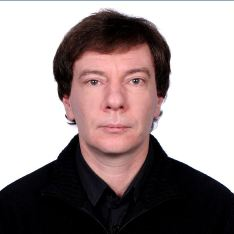New Advances in Nanowires and Quantum Dots
A special issue of Nanomaterials (ISSN 2079-4991). This special issue belongs to the section "Synthesis, Interfaces and Nanostructures".
Deadline for manuscript submissions: closed (31 August 2023) | Viewed by 2894
Special Issue Editors
Interests: molecular beam epitaxy; quantum dots; nanowires; semiconductor lasers; nanostructured devices
Special Issues, Collections and Topics in MDPI journals
2. Russian Academy of Sciences, Ioffe Institute, Polytechnicheskaya 26, 194021 St. Petersburg, Russia
Interests: modeling, synthesis, and properties of semiconductor nanowires; semiconductor nanostructures; nucleation theory with applications
Special Issues, Collections and Topics in MDPI journals
Special Issue Information
Dear Colleagues,
Nanostructured materials such as quantum dots (zero-dimensional objects) and nanowires (exhibiting in extreme cases one-dimensional quantum behavior) attract great attention due to their intrinsic properties. A combination of one-dimensional and zero-dimensional semiconductor nanostructures may open new horizons in solid state physics and in various applications. In the frame of this Special Issue, different topics will be highlighted. For quantum dots, papers on the Stranski–Krastanow growth mechanism as well as droplet epitaxy fabrication methods are welcomed. Nanowires of different semiconductor materials grown by both top–down and bottom–up approaches will form a significant part of the issue. New types of the hybrid structures such as “quantum dot-in-a-nanowire” or “quantum well-in-a-nanowire” will also be covered. Finally, we will consider the recent progress in fabrication and properties of the so-called “crystal phase quantum dots”, where the charge confinement is defined by a crystal phase change in chemically homogeneous nanowire.
Dr. George Cirlin
Prof. Dr. Vladimir G. Dubrovskii
Guest Editors
Manuscript Submission Information
Manuscripts should be submitted online at www.mdpi.com by registering and logging in to this website. Once you are registered, click here to go to the submission form. Manuscripts can be submitted until the deadline. All submissions that pass pre-check are peer-reviewed. Accepted papers will be published continuously in the journal (as soon as accepted) and will be listed together on the special issue website. Research articles, review articles as well as short communications are invited. For planned papers, a title and short abstract (about 100 words) can be sent to the Editorial Office for announcement on this website.
Submitted manuscripts should not have been published previously, nor be under consideration for publication elsewhere (except conference proceedings papers). All manuscripts are thoroughly refereed through a single-blind peer-review process. A guide for authors and other relevant information for submission of manuscripts is available on the Instructions for Authors page. Nanomaterials is an international peer-reviewed open access semimonthly journal published by MDPI.
Please visit the Instructions for Authors page before submitting a manuscript. The Article Processing Charge (APC) for publication in this open access journal is 2900 CHF (Swiss Francs). Submitted papers should be well formatted and use good English. Authors may use MDPI's English editing service prior to publication or during author revisions.
Keywords
- quantum dots
- nanowires
- epitaxy
- hybrid structures
- crystal phase







